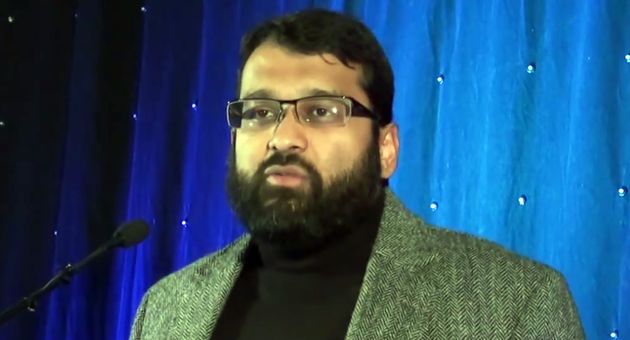Yasir Qadhi is an Islamic theologian and scholar who serves as the Dean Of Academic Affairs at The Islamic Seminary of America and is a Resident Scholar at East Plano Islamic Center in Plano, Texas.
In a lecture on April 12, 2014 in Oslo, Norway Yasir Qadhi discussed the fine line in Islam between righteousness and fanaticism that guides modern jihadist movements.
The introduction to his lecture on YouTube reads:
Thirty-five years ago today, on 20th November 1979, corresponding to 1st Muharram 1400AH of the Islamic calender, as the Imam of Makkah [Saudi Arabia] finished the Fajr [morning] prayer signaling the dawn of a new century of the Islamic calender, a group of overzealous rebels took the holiest place on earth as hostage claiming they have the promised Mahdi [Muslim Messiah] in their midst.
These rebels were not pagans or idol worshipers; on the contrary, they were, outwardly at least, pious Muslims. Many of them were Hufadh [Muslims who memorized the Quran] of the Qur’an and students of knowledge.
Knowledge is indeed power, but when this knowledge is driven by emotion & rage it becomes a powerfully-lethal force that can lead to fanaticism!
Join Shaykh Dr. Yasir Qadhi as he unveils a forgotten dark chapter of recent Islamic history where the holy sanctuary of the Ka’bah [holiest shrine in Islam] was turned into a war zone! And see how we can benefit from this recent incident in light of fanaticism rampant in our own times.
Here are excerpts from Yasir Qadhi’s lecture:
The first movement, and the one that I have actually spoken a lot about in a lot of detail, and , and I sear by Allah, one of the most scary and dangerous movements in our recent history, is the movement of Juhayman [ibn Muhammad] ibn Sayf al-Otaybi from Mecca [Juhayman al-Otaybi is a Saudi militant and soldier who in 1979 led the Grand Mosque seizure of the Great Mosque of Mecca, Saudi Arabia’s holiest mosque, to protest against the Saudi monarchy and the House of Saud]… Many of you might not be aware one of the saddest incidents in our recent Islamic history was the hijacking of the Ka’aba itself [the holiest shrine in Islam located in Mecca]… The Kaaba itself was hijacked. It was held hostage. The Kaaba, not by a group of pagans, not by a group of idol worshippers, not by a group of Kuffar [disbelievers[, by a group of ultra fundamentalist fanatics. That was so quote-unquote righteous and pious that many of the senior scholars alive at the time did not know what to make of it. Why? Because they thought these people were good people. They thought these people [are] righteous people, and this is why it’s so scary that there is a fine line between fanaticism and between righteousness. There’s a fine line between fanaticism and righteousness. And that line is sometimes difficult to distinguish even for people of great knowledge and great stature… these groups are not people with horns coming out of their heads. They’re not people with devil tails that you can recognize them. They are huffaz [Muslims who have completely memorized the Quran] of the Book of Allah [Quran. They are righteous people, but they’ve lost sight of reality. They’re so incensed and enraged at music and singing that they’re willing to shed blood in the haram [Masjid al-Haram also known as the Great Mosque of Mecca] thinking that will bring about Allah’s peace and religion. They have lost the plot completely, and frankly brothers and sisters, we see the same fanaticism in the modern jihadist movements… By the way Osama bin Laden himself [founder of the militant-terrorist Islamist organization al-Qaeda] mentioned that one of the first signs of becoming more Islamic to him was the Juhayman [al-Otaybi] incident, that he took inspiration from Juhayman and he, and he writes and I have his writings, I have his writings and his lectures, he writes that no doubt Juhayman what he did was wrong but still I sympathize with much of what he did…

Yasir Qadhi Picture: screengrab from YouTube Yasir Qadhi
